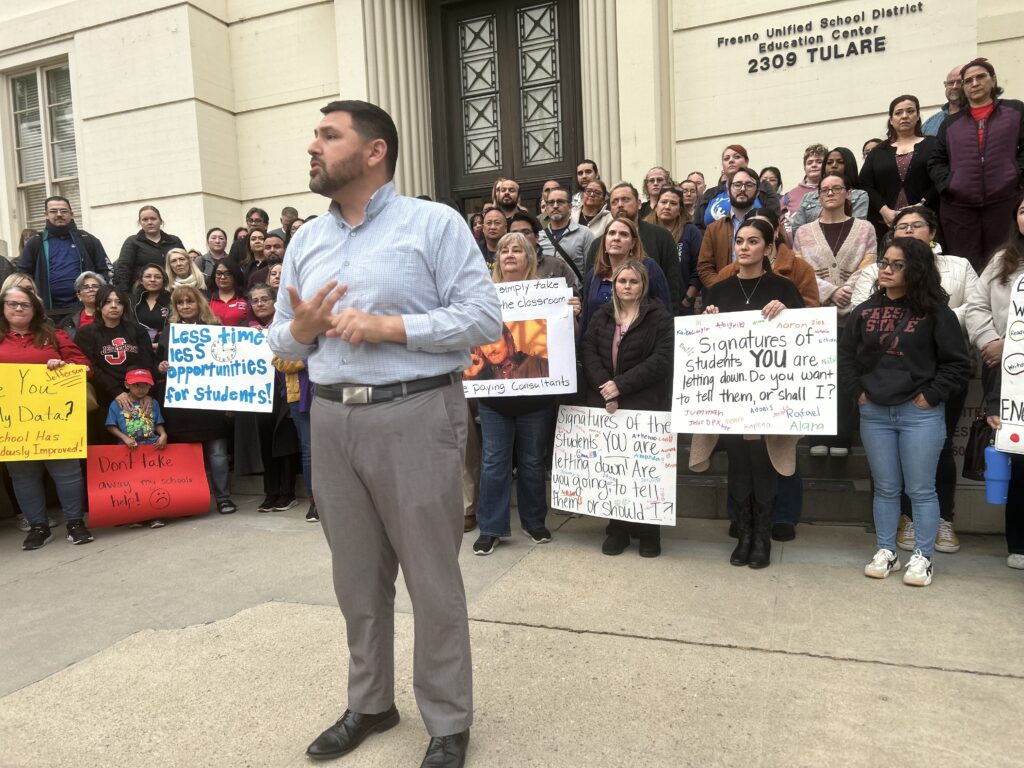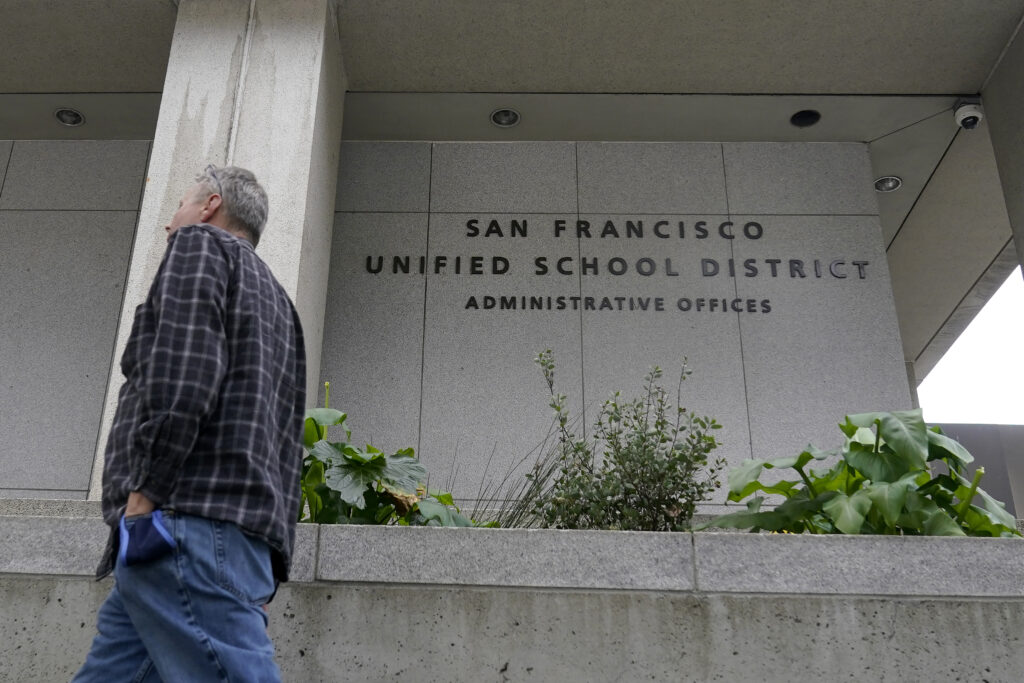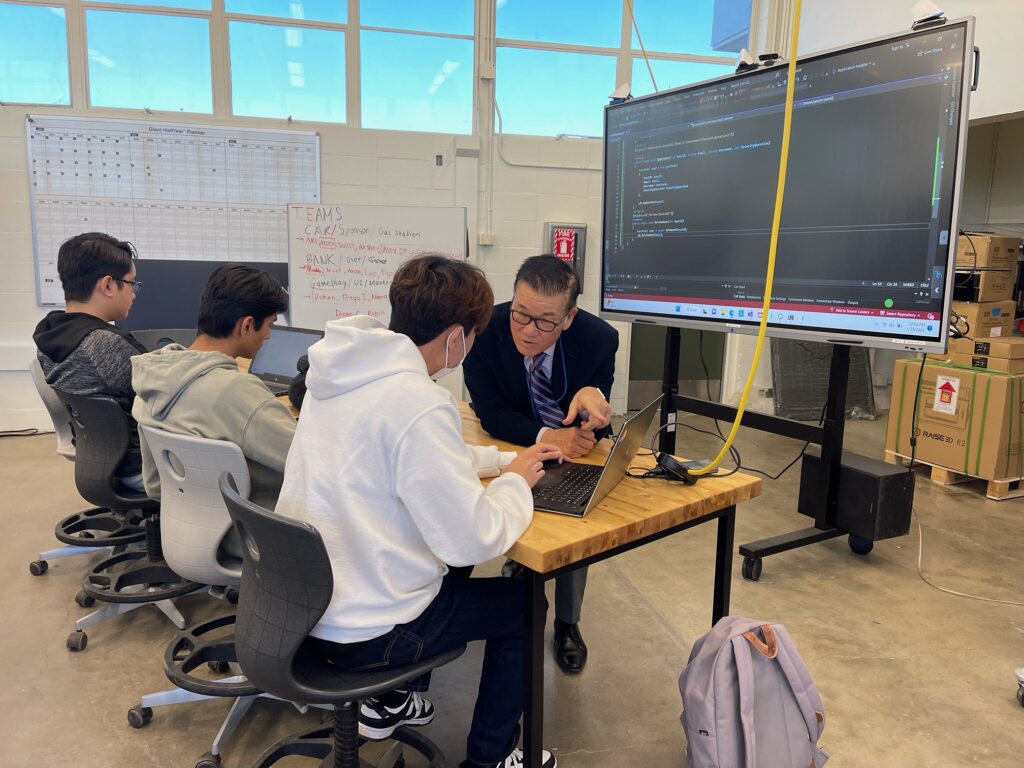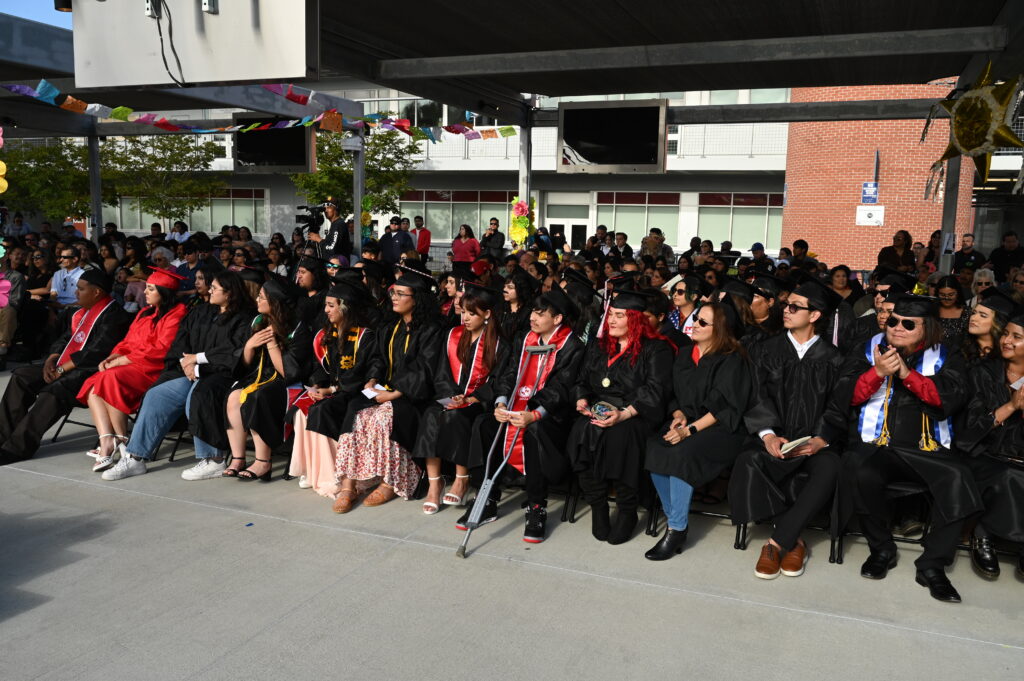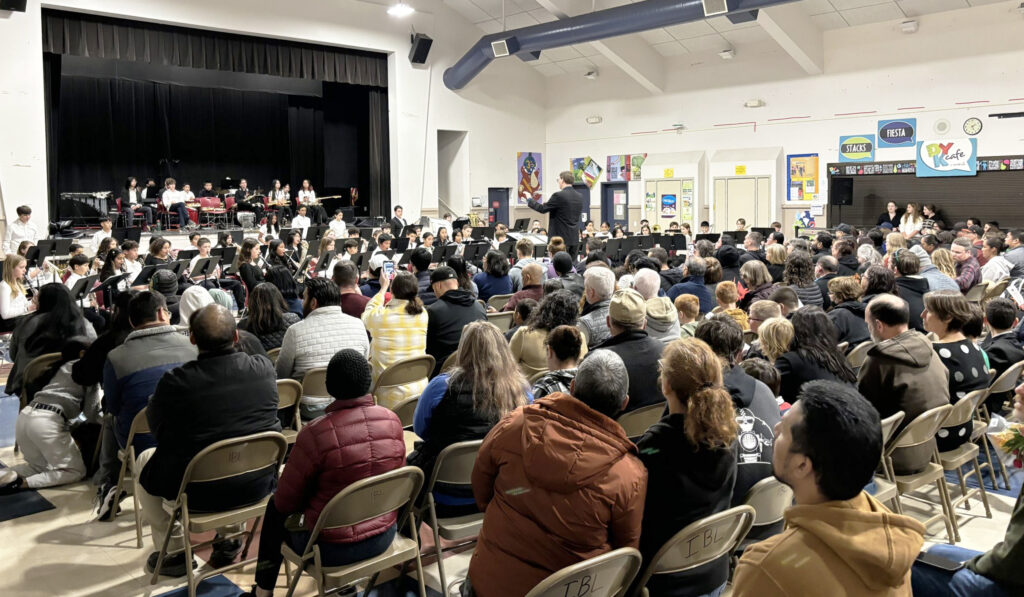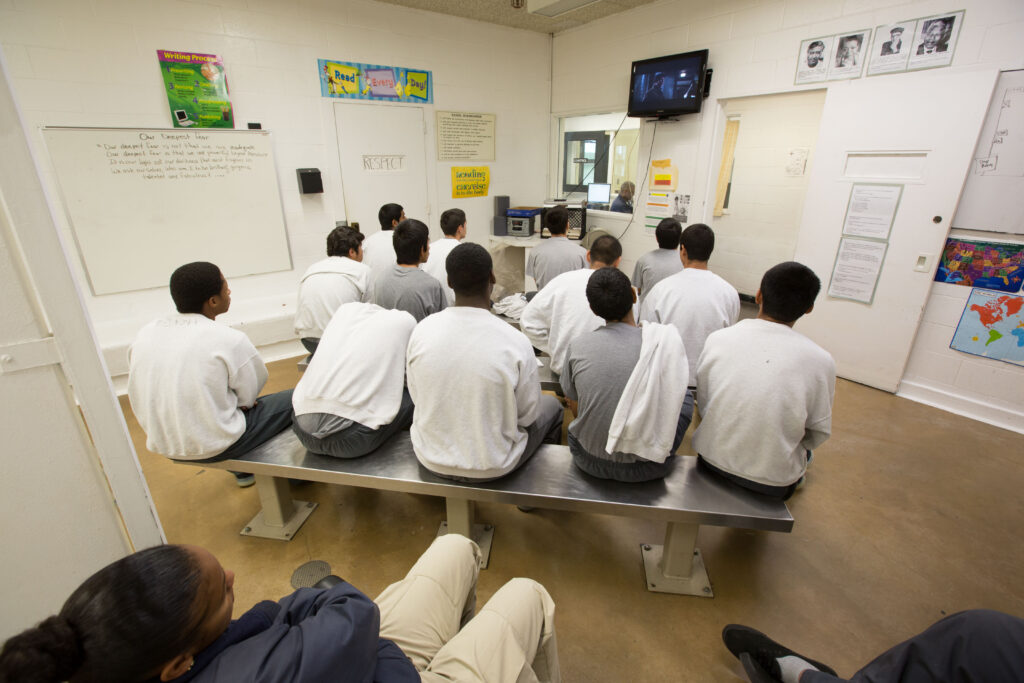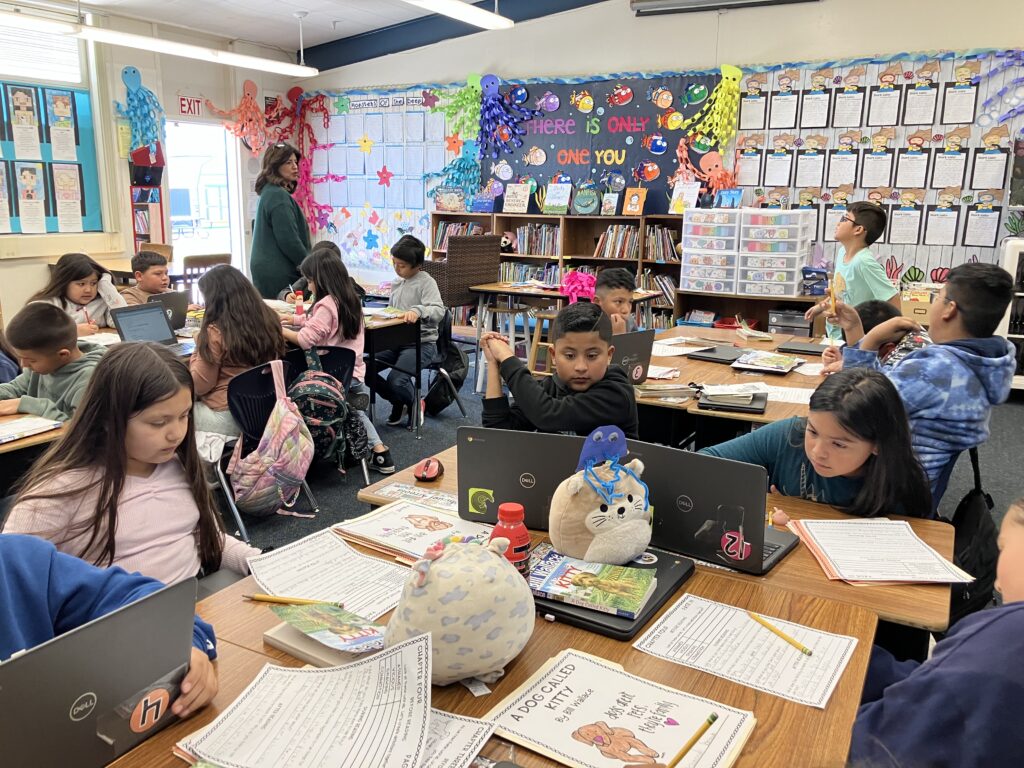
Fresno Unified School District will cut its Designated Schools program that provides 30 additional instructional minutes to over 24,000 students each day. Fresno Teachers Association President Manuel Bonilla and around 100 educators protested the decision on Wednesday.
Credit: Lasherica Thornton/ EdSource
About 100 Fresno Unified educators slammed the state’s third-largest school system for its “unilateral” decision to eliminate a decadelong initiative for underserved students during a news conference Wednesday evening.
The district’s decision-making is being challenged as leaders face pushback for getting rid of a student-focused program that, from the district’s perspective, isn’t consistently meeting the needs of those students.
The district will cut its Designated Schools program, an initiative to improve student achievement through additional daily instruction. The district announced in January that the program, affecting about 40 schools, 24,000 students and over 1,250 educators, will end after this school year.
Fresno Teachers Association President Manuel Bonilla said educators feel devalued and disrespected because eliminating the Designated Schools program without input from the school community is not a classroom-centered decision as it takes money away from the classroom, from teachers and from much-needed resources.
“It is a huge cut to trust,” Bonilla said. “It is a huge cut to respect and to value in this district. And we’re here to say, ‘We’re not going to put up with it.’”
For the superintendent and district staff, the main consideration in the decision to eliminate the program is its effectiveness: “Are we getting the return for the investment that we’re making?” asked interim Superintendent Misty Her.
“While we have gotten some results, they’ve not been consistent,” Her said. “We’ve not had consistent (growth) year after year.”
What are Designated Schools?
At Designated Schools, which are intended to close academic gaps at a faster pace, students have 30 extra minutes of instruction each day, teachers have 10 additional work days for professional training, and campuses have a full-time teacher on special assignment to assist with reading or math intervention, costing the district $30 million annually.
Designated Schools are typically located in neighborhoods with large numbers of students who are socioeconomically disadvantaged. They serve vulnerable student populations that often start behind other groups. The extra time and resources are meant to catch students up by focusing on foundational skills they’re missing, teachers told EdSource.
Those students are going to lose 30 minutes of instruction every day, Bonilla said, equating the time to 90 additional instructional hours each year.
For example, during that 30 minutes of intervention time, teachers divide their classes into small groups by proficiency level and target students’ weak points. Teachers have the assistance of support staff who provide enrichment activities and targeted instruction.
“Having that 30 extra minutes makes such a difference for these students, and we can see the gains, and we can see the growth that they make,” said Kate Hooper, a first grade teacher at Wilson Elementary, a Designated School.
What does the decision mean?
Designated School teachers are paid for the extra time and extra days they work, so eliminating the program means less pay for them.
Bonilla said the decision forces teachers to take a 12% pay cut, ranging from $651 to $1,150 each month.
District spokesperson Nikki Henry asserts that district officials stand behind their decision to end the $30 million program, but that much of what’s been communicated by the teachers union is “blatantly false” and “fear-based rhetoric.”
Nearly two-thirds of Designated School teachers will not see a pay reduction because there are already pay increases planned in their salary schedules, Henry said. In 2023, when the school district and teachers union reached a “historic” contract, the district agreed to 4.5% educator raises with a 2.5% bonus next school year. The remaining one-third of impacted teachers will see about a 2% decrease over two years.
Rather than keeping money in classrooms, Bonilla accused the district of wanting to pad its reserves and put the money toward consultants who, teachers say, don’t help them or students. According to Bonilla, the district’s reserves currently sit at about $234 million.
Most of the money is already tied up by the district’s financial obligations, Henry said, explaining that only about 7%, or $121 million, belongs to the unrestricted reserves that can be used. The district plans to spend the reserves to a projected 4% in the next two years, she said.
Fresno Unified is in its second year of budget cuts with at least two more years of “tough decisions” ahead. Though cuts were at the district level for this school year, they will likely touch the classroom next school year, including consultant contracts, Henry said.
Much like other California school systems, the district is facing declining enrollment, less funding due to lower average daily attendance, and lower than expected cost of living adjustments from the state — all of which contributed to the decision to end the program. Now the district must add the volatility at the federal level to that, district officials said.
Is funding the only reason for the decision?
The Designated School program seemingly includes all the components necessary to better student outcomes: more time with kids, more time for teachers’ professional learning and more support staff.
Henry said that in evaluating student growth over time, regardless of where student proficiency started, Designated Schools perform about the same as non-designated schools.
“You put $30 million a year into a program, and they perform similarly to non-designated schools,” she said. “There’s not a bigger growth.”
And there should be, Henry said. The Designated Schools initiative was meant to show that with extra investment, schools make academic gains faster.
An analysis of the program, conducted by Hanover Research in the 2020-21 school year, also found that evidence of the program’s effectiveness on academic outcomes is mixed.
“It’s just, more than anything, disheartening, coming from people who haven’t been in the classroom in a very long time,” Hooper, the Wilson Elementary teacher, said.
She and other teachers say they see the gains students are making. Devyn Stephens, another Wilson Elementary teacher, said she had a first grader who didn’t know their letters or sounds on the first day of school and is now able to read at a kindergarten or early first grade reading level, adding that she can’t imagine that being possible “without that 30 minutes.”
Wilson Elementary third grade teacher Jessica Avila said the time is needed to ensure her students know how to read since the third grade curriculum is to read to understand, not learn to read.
There are “a few bright spots” in the data, the district admits, but not enough. The district did not provide the school-specific data it used to make its decision.
Henry said after-school programs, which include homework help and intervention, will absorb the students who will no longer have 30 extra minutes of instruction in the classroom. Fresno Unified will also look to other programs that can make a difference.
Since eliminating the program is a superintendent and staff-level decision, district staff won’t be recommending the program’s continuation in next year’s budget. Technically, the school board has the discretion and authority to add it back.
To many, that process is the problem.
“It’s not just the teachers that are suffering in regards to this lack of leadership, a lack of direction and student-focused decisions,” Bonilla, the teachers union president, said about a decision that affects tens of thousands of students. “They have not gone to our community whatsoever to have a discussion.”
“If the district wants to own this, they need to come out and be real leaders and talk about it with the community.”
